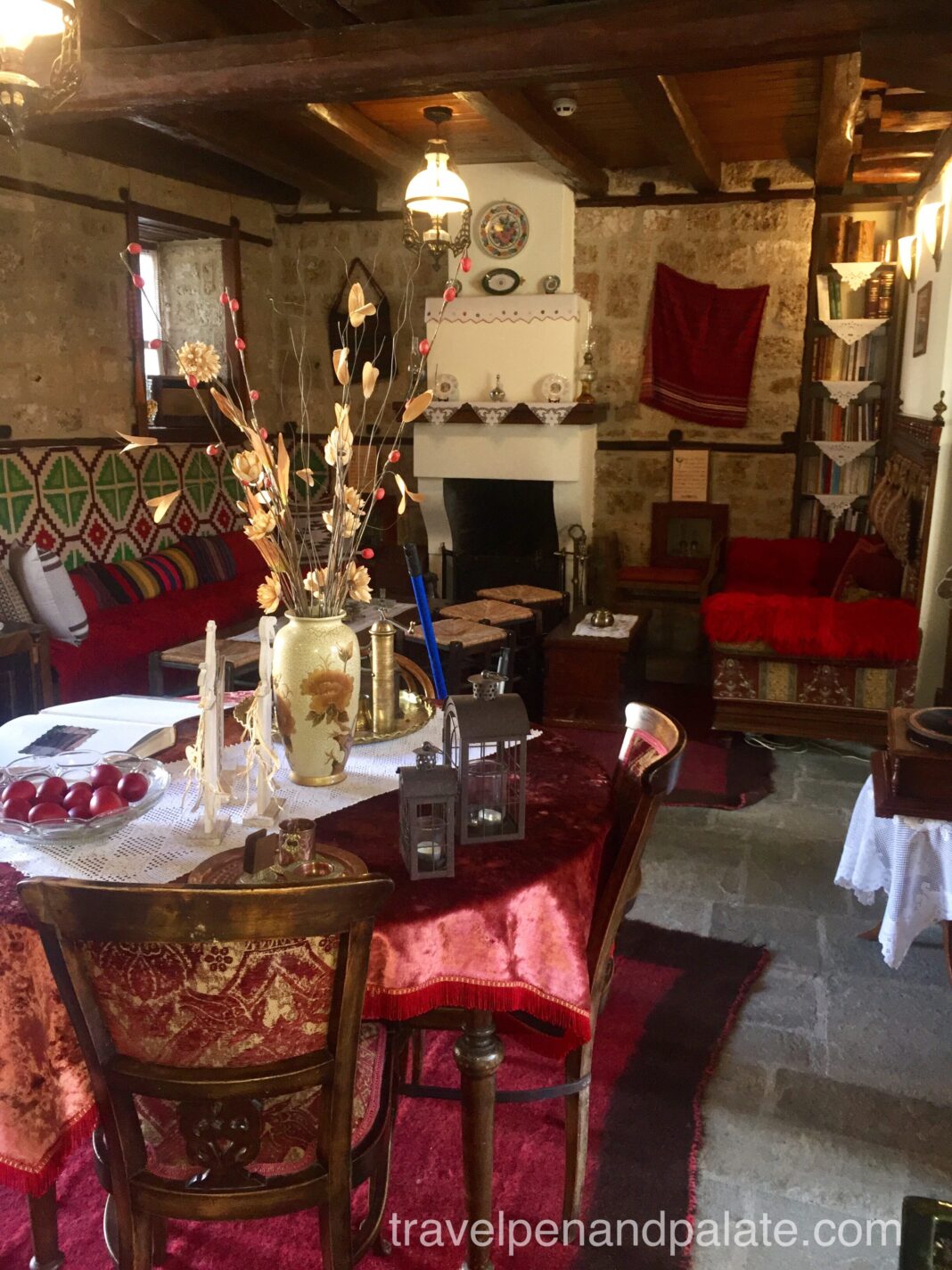Hotel Hagiati offers the ambiance to experience Edessa’s present within its past.
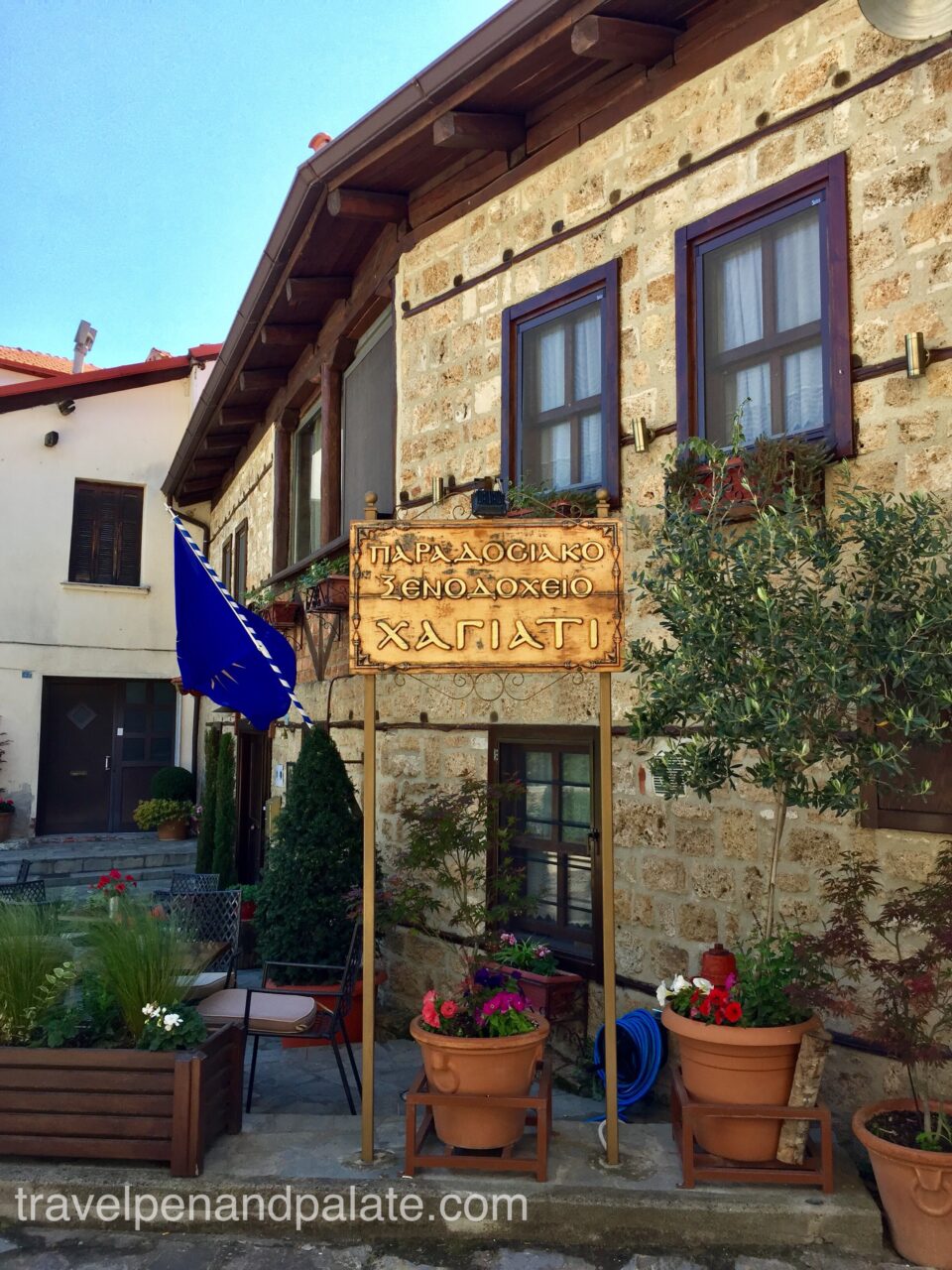
Occupying a historic stone merchant’s house a short stroll from Waterfalls Park, the Hotel Hagiati’s interior is a blend of Balkan and Near East textiles and decorations. It’s not an artificial blend. This traditional Macedonian style is due to being at the crossroads of the world.
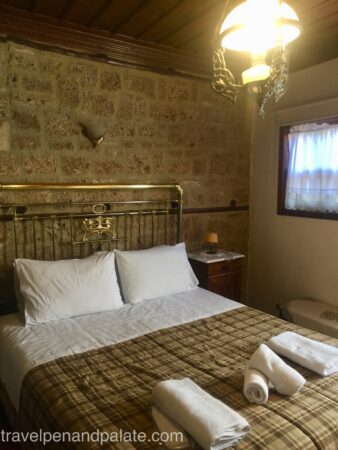
Cozy rooms feature wood-paneled ceilings and natural stonewalls, plus minibars, free Wi-Fi and flat-screen TVs. Room service is available and the enclosed garden courtyard of the former stables is a cafe until late in the evening.
Driving the smooth, flat roads of the Loggos Valley past the ancient cities of Pella and Giannitsa, through lush farmland it was easy to see why this became the heart of an empire. Ahead, visible for miles, was the Rock of Edessa. Looming 1,000 feet above the plains, the current city of Edessa was perched like an eagle’s nest.
The city proper wasn’t always on top of the rock. The top held the acropolis. According to legend a descendant of Hercules, Karanos, founder of the Argead Dynasty, (Alexander the Great’s family) built Edessa as Macedonia’s first capital. Two thousand years later the waterfall was named after him – the tallest in Greece.
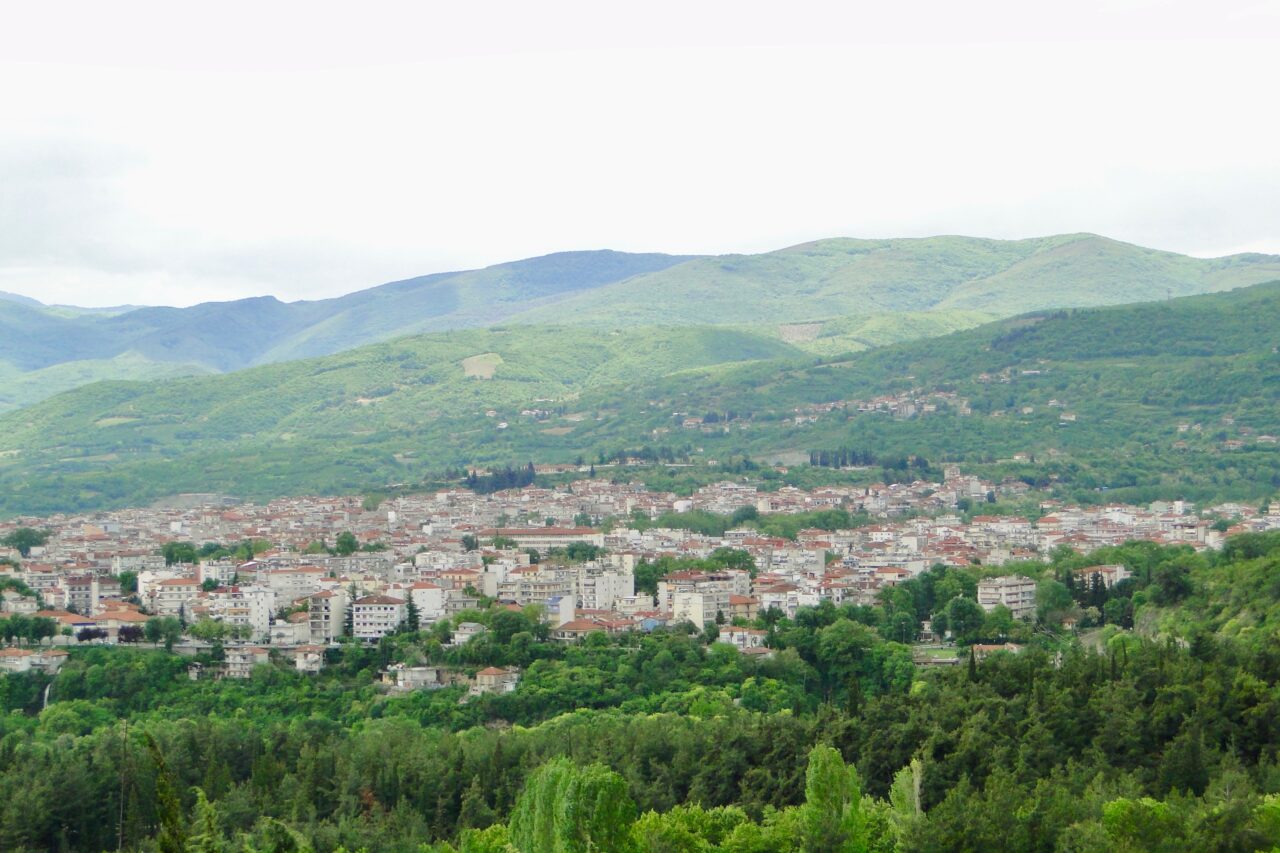
The city was at the base on the valley floor close to the agricultural commerce of this affluent region. If a mantra of business has been “location, location, location,” Edessa was blessed. It was a western distribution center for the fabled Silk Route linking Asia and the Mediterranean World since at least the 5th century B.C.E.
Both earthquakes and wars during the long history of Edessa meant that few buildings remain intact prior to the 14th century. The Varosi district, where the Hotel Hagiati is located, is the prime historic area keeping its character and medieval Macedonian ambiance.
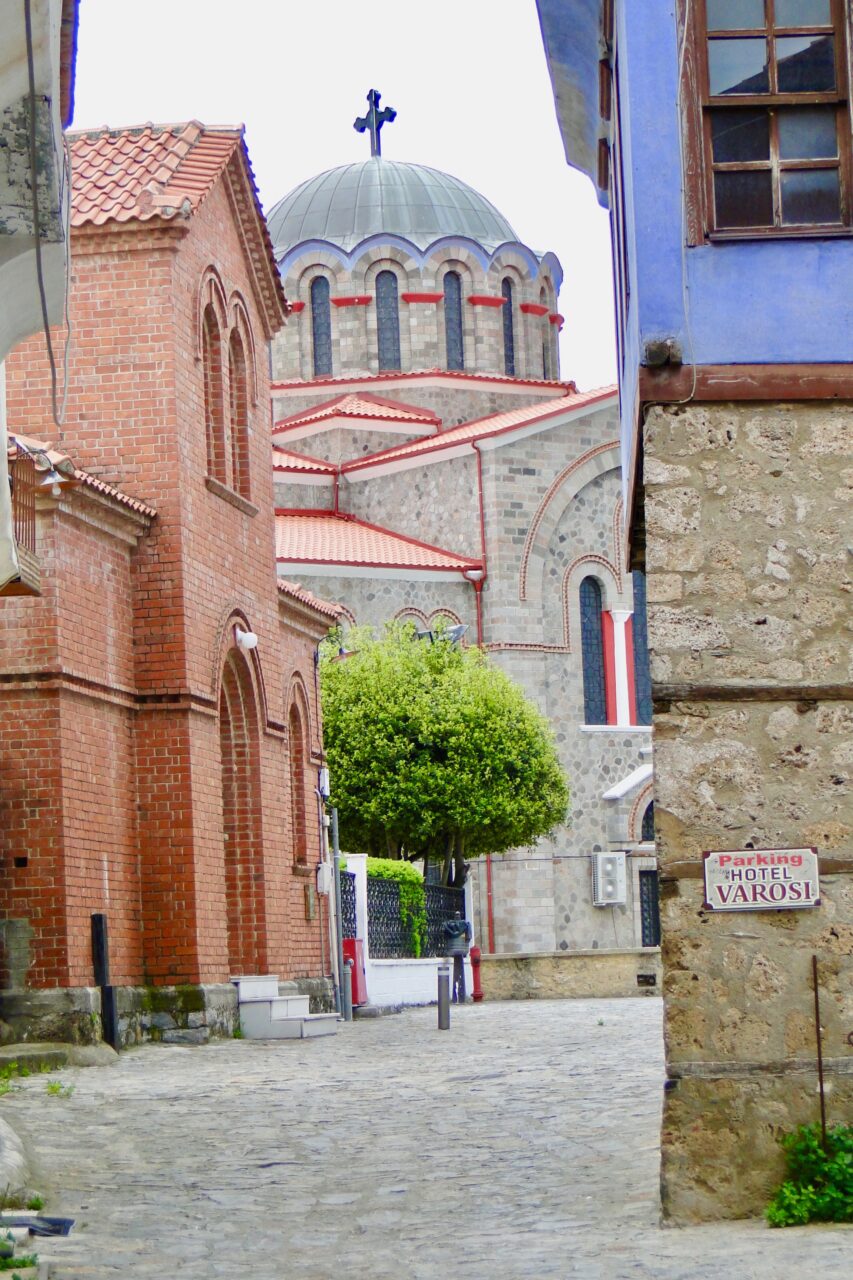
Verosi was created on the site of the city’s ancient citadel after the fall of Edessa to the Ottoman Empire in 1389. This was followed by the catastrophic topography altering 1395 earthquake – it created the waterfalls – which by the mid-19th century had turned the neighborhood into a major water powered industrial center. Significant World War II damage and the demise of the mills led to the Municipality of Edessa in the 1990s to focus on a concerted effort to preserve Verosi.
Meticulous but expensive restoration continues. Restoration must preserve and repair the exterior using identical materials and methods. The Hotel Verosi, the Hotel Hagiati’s compatriot around the corner, has a Plexiglas floored lobby covering ancient city walls.
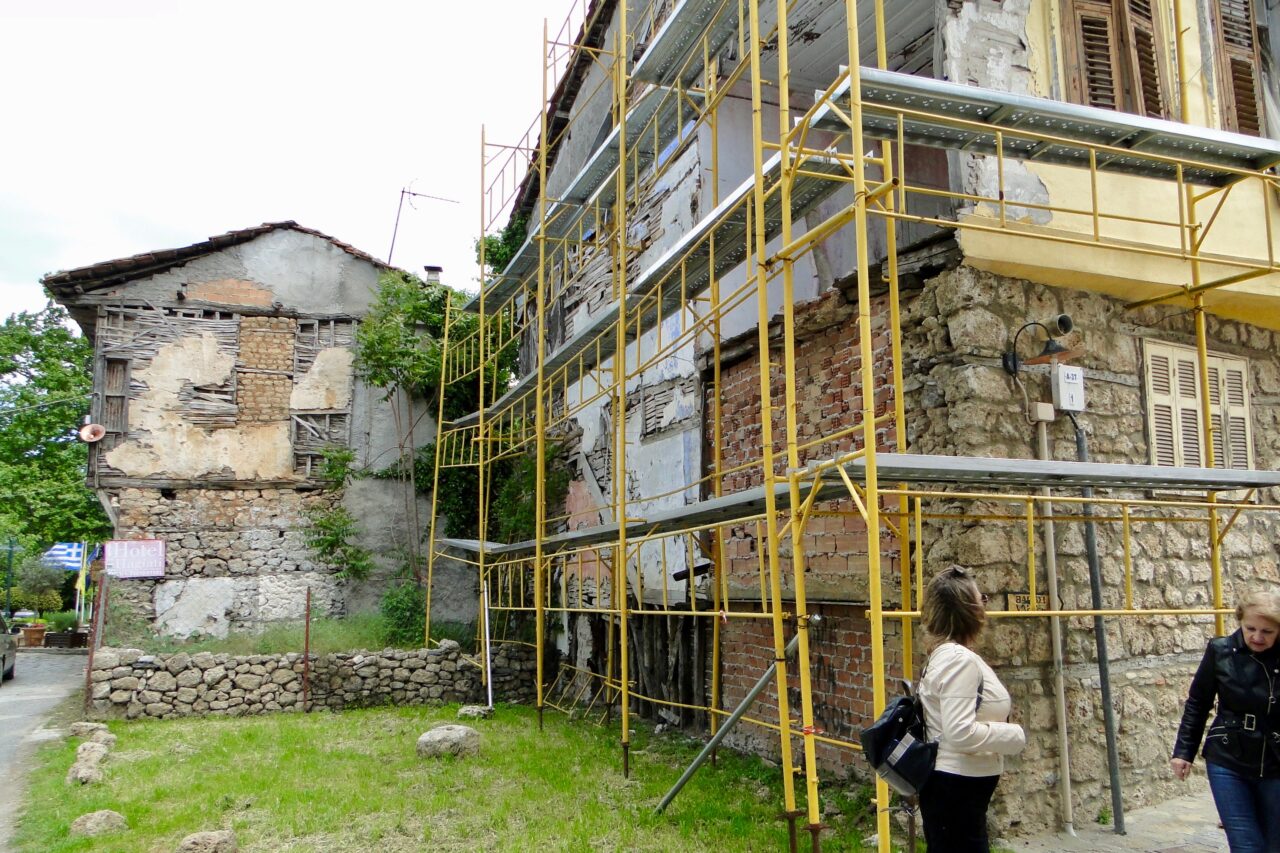
The Hotel Hagiati is a product of this effort, and its location could not be more central to both Waterfalls Park and a historic walk through Verosi.
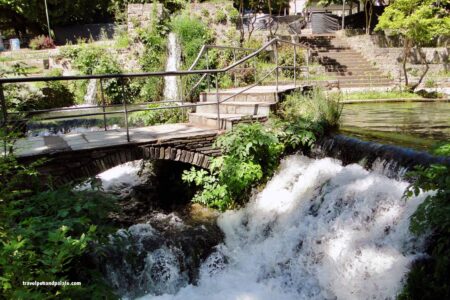
Virtually next to the Hotel Hagiati is the centerpiece of Edessa, Waterfalls Park and the Open Air Water Museum. Started in the 1940s as the multilevel entrance to the tallest waterfalls in Greece, Karonos Falls, the Municipality completed the restoration of surviving mills into museums in early 2000. The museums highlight the industrial and agricultural history of the region as well as the significance of water and the ecosystem.
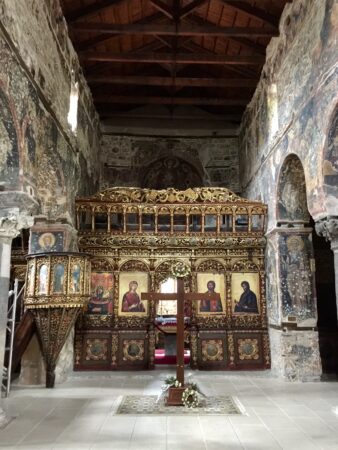
In the opposite direction from the Hotel Hagiati a stroll will bring you past the 14th century Byzantine Church of the Koimisis – its historic frescoes are undergoing restoration. The many canals and streams snaking through big old trees set a dreamy scene. Lined with small cafes, the water softens even the modern city.
The world’s oldest convenience food?
Breakfast is complimentary at the Hotel Hagiati and among a menu of choices are local jams – especially the region’s famous cherry preserves – their fresh peaches and ancient dishes such as Trahana Soup. In its most basic form Trahana Soup is the traditional farmer’s breakfast porridge yet not just in Greece.
Some culinary historians consider trahana to be the world’s oldest convenience food. Trahana is made with semolina, wheat flour, bulgur or cracked wheat. Milk, buttermilk, or yogurt is mixed in to form a thick dough.
Trahana comes in two types: sweet and sour. Sweet is made with whole milk, typically goat’s milk, and sour trahana is made with yogurt or buttermilk.
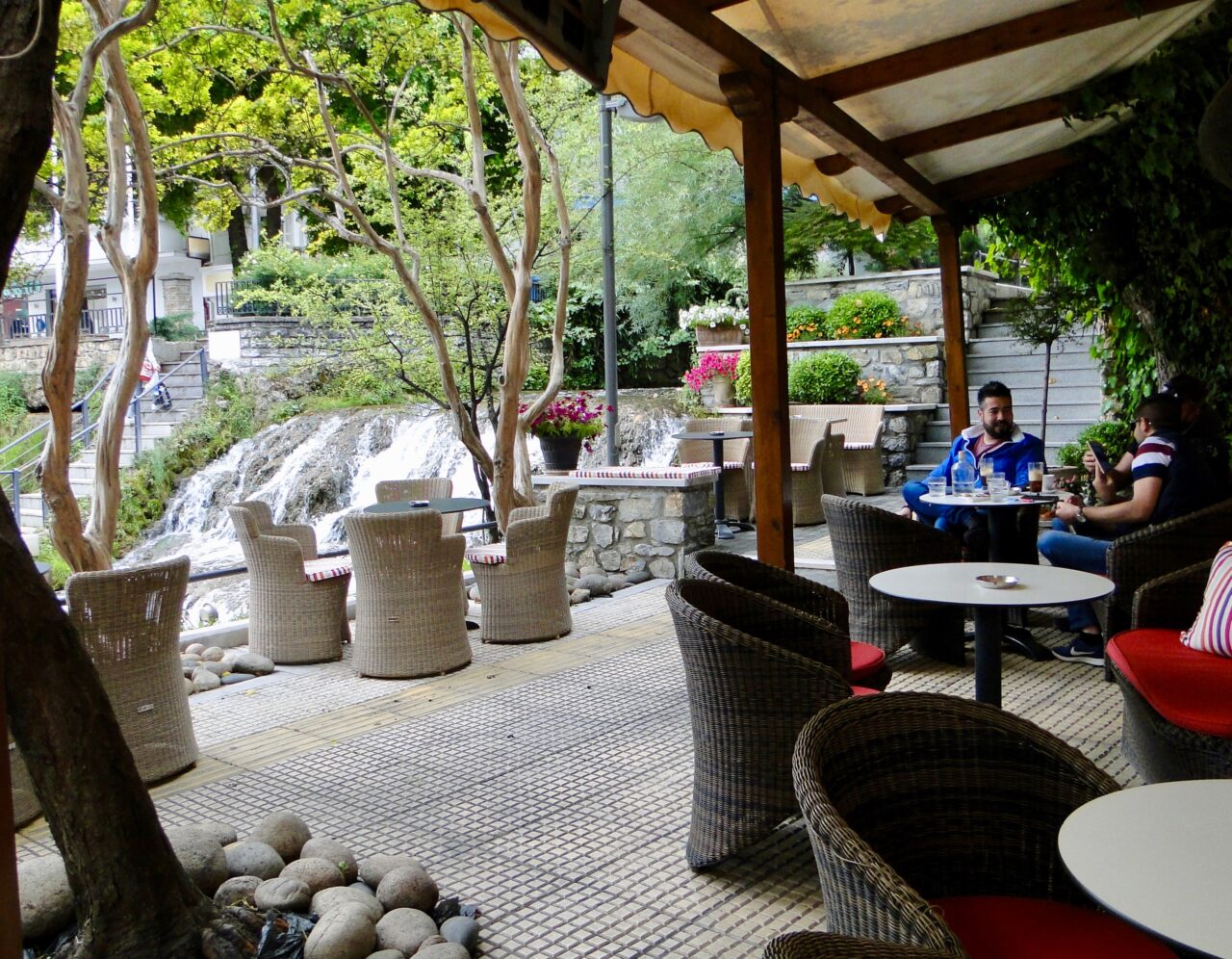
Regional variations can have additions such as vegetables, sesame seeds or red peppers. The mix is then broken into chunks, dried, and then broken up again into pea size pieces. It sounds simple, but the process, if done by hand, is lengthy so it was made in large quantities, carried in pouches on caravans and was a staple in households.
Whatever its origins, trahana in various forms is still found, commercially produced, almost everywhere from the Balkans to the Middle East. In the Edessa/Pella Region it’s made and distributed by Agrozimi, makers of Greek traditional products since 1969. It’s a nearly instant thickening agent – like Ramen noodles – added to soups, stews or as a food topping. Another proof that Eastern Mediterranean/Mid Eastern cuisine knows no boundaries.
Hotel Hagiati’s breakfast Trahana Soup was chicken based. In “The Joyful Cook’s Guide to Heavenly Greek Cuisine,” Greek-American cookbook author Georget Photos has an upscale recipe.
Spicy Chicken Trahana Soup

Ingredients:
- 1 fresh chicken, quartered
- 2 tomatoes, chopped
- 1 cup spicy trahana (not spicy can be substituted)
- 1 onion, chopped
- 1 bay leaf
- 4 Tablespoons unsalted butter
- 1 cinnamon stick
- ½ bunch parsley
- ¼ teaspoon pepper
- 1 cup red (or white) wine
- water
- salt to taste
Preparation:
- Melt the butter in a deep skillet.
- Saute bay leaf, pepper, parsley, cinnamon stick, onion and tomatoes for 1 minute
- Add the trahana and continue to saute 1 to 2 minutes more.
- Arrange the chicken quarters on top of the sauteed mixture.
- Add the wine and ½ cup water.
- Cover and simmer on med low heat for 1 hour. Check halfway and add more water if necessary.
After a hearty breakfast, it is an easy stroll to take in the history of this city and use as a base to explore the legendary history of the Edessa/Pella Region. Absorb the soul of Macedonia at the Hotel Hagiati.
When you go:
Edessa is an easy 55 miles (90 k.) west of Thessaloniki. It’s possible to drive, take a train or travel by intercity couch bus. Pella Archaeological Site and Giannitsa are within 25 miles (40 k.) from Thessaloniki. Both are on the (Silk) route between Thessaloniki and Edessa.
What to do in the Edessa/Pella Region? At home with Alexander: Edessa and Pella
Where to eat: Silk Road cuisine in the Pella Region
Special thanks: Edessa Municipality, Edessa Tourist Information Center and Pass Partout Tourism Marketing for facilitating my visit.
Travel with Pen and Palate to Greece and the world every month in the Hellenic News of America.




